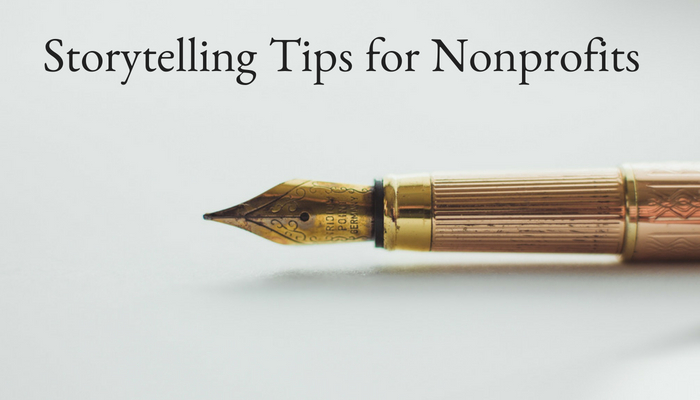Table of Contents
Storytelling is something all of us have enjoyed from our childhood days. Sitting at home curled up with a good book while it’s raining outside, or lying down with our head in the lap of a parent while they narrate a fairytale, is something most of us have experienced and loved. These are childhood memories that simply don’t fade away, nor do we want them to.
As we grew up, these forms of storytelling changed; in addition to books, we now started watching movies and television serials, then moved to YouTube videos and blog posts, and then posts and videos on social media. What didn’t change was that we always rooted for a character, crying with them for their bad luck and cheering along when they defeated the bad guy and emerged stronger and victorious. These stories, whether visual or written, always elicited emotions in us and continue to do so.
Which is why nonprofits use them time and time again to paint vivid pictures of people in need, so that the more fortunate can be motivated to step forward and help. It’s a simple concept really; we as humans are hardwired to feel empathetic towards people in unfortunate situations, and storytelling is an extremely powerful form of drawing out these feelings in our brains.
But even nonprofit storytelling has some basic rules and best practices which need to be followed to create the sort of impact a nonprofit desires. These tips look to address those points. Let’s look at them.
1. Build your story’s outline
Before you go about creating the story that you want to put out on different channels, spend time thinking about the basic outline of the story. The stories that we read as children more often than not consisted of a simple theme: (Once upon a time…)– they featured a lead character who had to achieve a goal.
They faced several obstacles which had to be overcome. Either they were helped by someone, or they used their determination, or a combination of both, and were able to achieve their goal- (…happily ever after).
- Who is your story going to feature? Identify the person or cause who had a genuine grievance that your nonprofit helped address.
- What are the goals of that person? Identify exactly what barriers they faced which stood in the way of their goals.
- How did you as a nonprofit help address the issue? Identify the solutions from your nonprofit which helped their story reach a happy ending.
2. Use different channels to tell your stories
It is absolutely necessary to portray a vivid and realistic image of the person or cause. The reason why nonprofit storytelling works is because it creates empathy in our hearts and a desire to help someone. This is possible only when your beneficiary has a face, a voice, and simple interests in their life, like playing football on the street; anything which makes them human, and has the audience (read potential donors or contributors) rooting for them.
Actual situations affecting actual people; this is what nurtures emotional bonds even when the audience and the character don’t know each other.
For this purpose, use different channels to talk about them. Visual storytelling works wonders; video storytelling– where you interview the person, or show how your organization is helping, and pictorial storytelling- showing the subject going about their daily livelihood, are effective. Your audience is able to place a face on the person and identify them with a cause, which makes them likelier to help.
Use social media and blogs to get these stories out there with the help of digital storytelling. These channels with their large audience bases make it easier to reach out to many people in a short time through the ubiquitous likes, shares, comments, and retweets.
You should even consider exploring live sharing; real-time videos and stories told on Facebook live or Instagram live builds engagement and lends a strong sense of authenticity.
3. Know your audience
When you post videos or images on your blog or on social media, you don’t necessarily have control over the type of audience that you’re reaching out to. And that’s totally fine; anyone and everyone can be a contributor to a good cause.
But if you want the attention of a specific set of people, try asking yourself a few basic questions like:
- Who am I trying to reach out to and why?
- How can I build the story in a way which will attract their attention?
Understanding your target audience changes the way you approach creating a story, as opposed to when you don’t necessarily have anyone in mind. For instance, if your story revolves around a teenager who is talented at basketball but doesn’t have the money to go for coaching, you might want to reach out to families with children who play sports in school or college. Having an idea of who you want to reach out to helps you in framing your story better.
Also, nonprofit storytelling should be approached from different angles. A first-hand account of the person you’re trying to help is preferred, but you could also approach it from the perspective of volunteers or staff who are helping them, or their friends in the neighborhood. Different viewpoints appeal to different audiences.
4. Give contributors an option to meet the ‘protagonist’
As a nonprofit, you don’t just have to restrict yourself to call to actions (read collecting funds from people). Offer them the chance to volunteer as well, which includes them meeting the very person or coming face to face with the cause that they are helping. You’ll be surprised at the response that you get!
Offering them a chance to meet someone gives them the ground reality of the situation and gives them the opportunity to empower people in need. Sometimes, just giving money isn’t enough; meeting someone, talking to them, and just spending time with them can be beneficial too.
Connecting volunteers directly, helps them pen the ‘ending’ of the story.
5. Describe the impact in detail
Once you’ve helped someone and a significant impact is made in their life, for your nonprofit storytelling, get the word out there. Use the same visual media that you used for introducing the cause to talk about the change effected. The accomplishment made, the barriers overcome, and how the goal was reached are some major points to include.
A before/after video or photographic story shows that concrete change was made. You could also interview contributors or volunteers to understand their side of the journey as well (if they helped substantially).
Also, don’t be hesitant to emphasize that more work needs to be done if that is the case; storytelling for your nonprofit doesn’t imply sugarcoating any aspect. It is your duty to put out the truth as it was and is.
Describing impact in detail is useful in that it shows donors that their help paid off, and encourages others to contribute as well, as they know that your nonprofit has done some quantifiable work in the past. And of course, the impact that is created and shown only serves to inspire everyone- your nonprofit, contributors, and ultimately, the person helped- to do better, be better, and help people in need.
Check out some great examples of nonprofit storytelling for a clearer understanding of how your nonprofit storytelling can be excelled.
Nonprofit storytelling is certainly an art which needs to be honed and practiced over time to have its fullest impact. It appeals more to the emotional instincts of humans rather than the logical side to achieve its aim. Hopefully, the points mentioned help nonprofits do just that because apart from creating social impact, it is also necessary for your nonprofit’s marketing.







